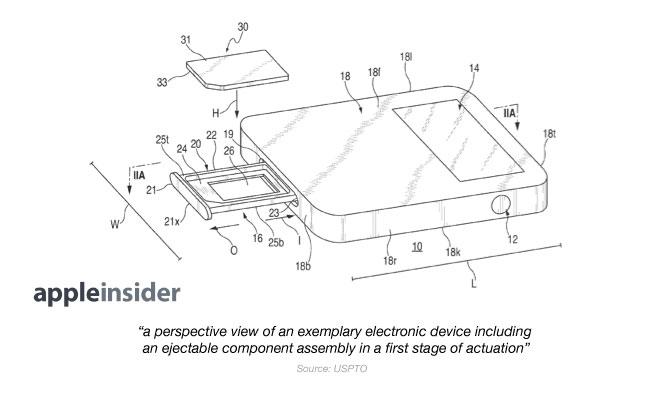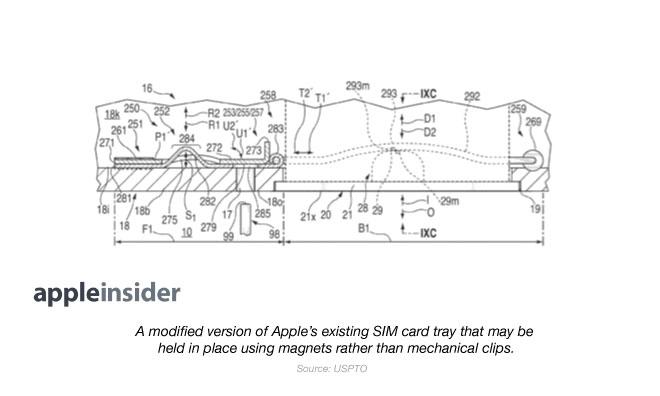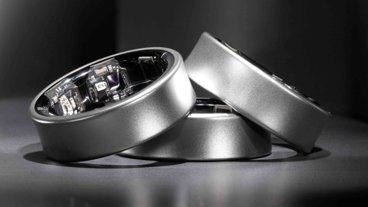Apple patent application shows off space-saving, magnetically-secured SIM tray
A new patent application from Apple reveals that the company is working on mechanisms that will eliminate the need for a SIM ejector tool and its resulting internal hardware, potentially allowing the iPhone maker to build future handsets with even slimmer form factors.
The United States Patent and Trademark office on Thursday published an Apple patent application covering a variation on the company's unique SIM card tray design. The application — covering "Systems and methods for ejecting removable modules from electronic devices" — would allow future SIM-equipped devices to retain and eject the tray by magnetic means rather than mechanical. Apple says in the filing that current designs, which utilize internal retaining clips and require a hole in the device's exterior for removal, take up too much space and provide a point of entry for dirt and grime.
"Such an ejector mechanism often takes up valuable real estate within the housing of the device," Apple's application reads. "Moreover, a portion of such an ejector mechanism often requires a user to interact with the ejector mechanism through an opening in the housing that may allow debris to enter the housing and impair the function of the device."
By using magnets, rather than mechanical connectors or a "push-push" slot commonly found on memory card readers, the SIM tray mechanism can be made even smaller and lighter than it is in Apple's current generation of devices.
Apple famously fought against efforts to include a "push-push" slot in the nano-SIM specification last year in a debate that was raging around the time the magnetic tray patent was filed. BlackBerry and Motorola opposed Apple's notchless design for the nano-SIM specifically because it would require the device to have a SIM tray.
Should the design materialize in an actual product, it would not be the first time Cupertino's design guru Jony Ive used magnets in place of mechanical fasteners. Apple's iPad Smart Covers are held in place by magnets, while mechanical latches were phased out in favor of magnetic latches beginning with the MacBook Air. In previous generations of iMacs, Apple used magnets to hold the computers' display glass in place
Apple cites a wide variety of use cases for the design, including many wearable objects like watches, rings, necklaces, belts, accessories for belts, headsets, and accessories for shoes.
US Patent Application 20130267106 was filed in April of 2012. It credits Kenneth A. Jenks of Cupertino as its inventor.
 Shane Cole
Shane Cole















 Amber Neely
Amber Neely
 Thomas Sibilly
Thomas Sibilly
 AppleInsider Staff
AppleInsider Staff
 William Gallagher
William Gallagher
 Malcolm Owen
Malcolm Owen
 Christine McKee
Christine McKee










14 Comments
That sim is going into something suspiciously watch-sized.
I would like to see another "secure enclave" in the Qualcomm cellular chip that can hold many virtual SIMs.
So it pops out like a magnetic latch on a Sauder or Ikea cabinet?
The new brains at Apple
Hey, liquid metal.